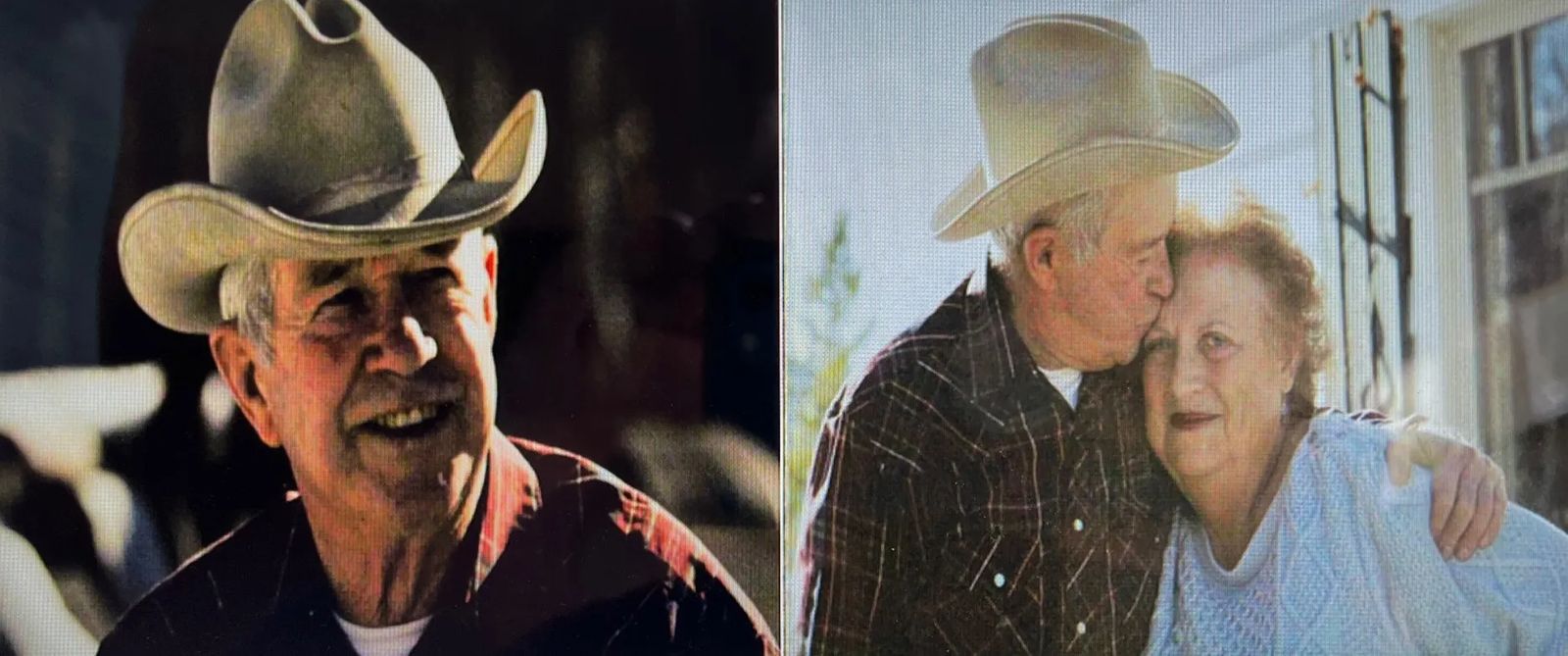
MONTANA COWBOY HALL OF FAME Living INDUCTION
WALTER ELROY “WALT” SHAW, SR.
DISTRICT 12 - YEAR 2024
Walter Elroy “Walt” Shaw was born on the Shaw ranch, homesteaded in 1871, by Walter’s grandparents, in South Boulder Valley near Cardwell, Montana, on January 31, 1936. Walt was raised by his parents, Elroy and Ada Shaw, along with his three sisters. At a very young age, Walt was involved in all the ranch chores and activities. When he was old enough to ride, Walt was gifted a rather tall horse named Lighting. Being a young boy, he had to be creative in order to get the bridle on. Once done, he could be gone all day riding through the valley visiting neighbors and friends. Walt enjoyed riding horseback so much, that even if he was in the classroom and his older cousins drove cattle past the school, he wanted nothing but to walk right out the door and join with them.
During the years Walt was in high school his father allowed him to help his cousins at the Candle Stick Ranch move their 1500-head herd of cattle to summer range. The drive would begin after a three-day gather and include a cavy of 30 saddle horses used to move the livestock ninety miles south to the West Fork of the Madison River. In the spring, driving the mother cows with calves at their sides would take a full five days of trailing. The return drive in November was a day shorter as by then the calves were able to travel more quickly. As a young man Walt remembers several fall gatherings where weather turned bitterly cold with temperatures often dropping below zero. One such occasion he had ridden to the top of Norris Hill, located between Norris and Cameron, Montana, and upon seeing the school bus, waved it down. He took the saddle and bridle off his mount and with them in hand, stepped into the bus. His horse rejoined the herd while Walt rode onto Norris with the driver. Later that day his cousins came by and picked him up, helped him re-saddle his horse, and together continued moving the cattle toward the ranch and winter feed ground.
The next year, the decision was made for the Candle Stick Ranch to truck the cattle to the West Fork summer pasture. As much as he enjoyed the work, no one was more grateful than Walt to not have to endure those bitter cold days of trailing the herd back to the homeplace.
When Walt was 12 years old, his Mother passed away unexpectedly, and in 1956, at the age of 20, he lost his father to a sudden aneurysm. Young Walt worked the family ranch with his grandmother who was the principal owner.
By July 1953, the Korean war had ended, but the military draft was still in place. That summer, Walt received notice for registration from the US Armed Forces Examining and Entrance Station located in Butte, Montana. After spending the morning feeding cattle, he traveled to Butte where he answered questions, received a physical, and completed endurance testing. At the end of the day, the military official instructed Walt that he was to join other young men being transported to California to await their orders. Walt informed the officer in charge that he would most likely not be able to fulfill that assignment as he was the only man left with the responsibility of managing his grandmother’s ranch. The next day Walt’s Grandmother arrived in Butte, with a letter in hand stating the same, which led to his release from military duty. Later in life, Walt expressed to his family that he wished he could have served in the armed forces.
Eventually, Walt took over the operation of the ranch. In 1961, he married Aileen Owsley and together they raised a family of four boys, cattle and horses. He managed the flood irrigation, haying and general farm work but riding horseback and working cattle is where he found the most enjoyment.
Walt grew up in a time when he witnessed what he believes to be the greatest change in agriculture, which was the move from horsepower to mechanized equipment. World War II had ended, and use of the tractor was phasing out the horse. One day when Walt was in Butte visiting his cousins, he had noticed several box cars loaded entirely of horses arriving at the railyard. WWII had ended and the surplus of horses were no longer needed to supply the cavalry division. Upon learning that the animals were headed to the cannery he recalls feeling that he had absolutely no control regarding the changing of times ahead of him.
Walt feels he was faced with a greater challenge than the generations before him in controlling noxious weeds invading Montana grazing land. He remembers well, without hesitation, that it was extremely time consuming to work on eradication, but worth every effort put towards land stewardship and conservation.
If Walt had a hobby, it was the time he spent using his draft horses to skid logs to accomplish various projects. He milled the logs on the family’s 120-year-old sawmill using the finished product to build bridges, barns and repair corrals.
After 60 years of marriage, Aileen passed away in late July of 2021. Walt still resides on the homeplace where he is now retired and enjoys a few cows he looks after.
Shaw, Walt Jr. Personal Interview. 7th April 2019

